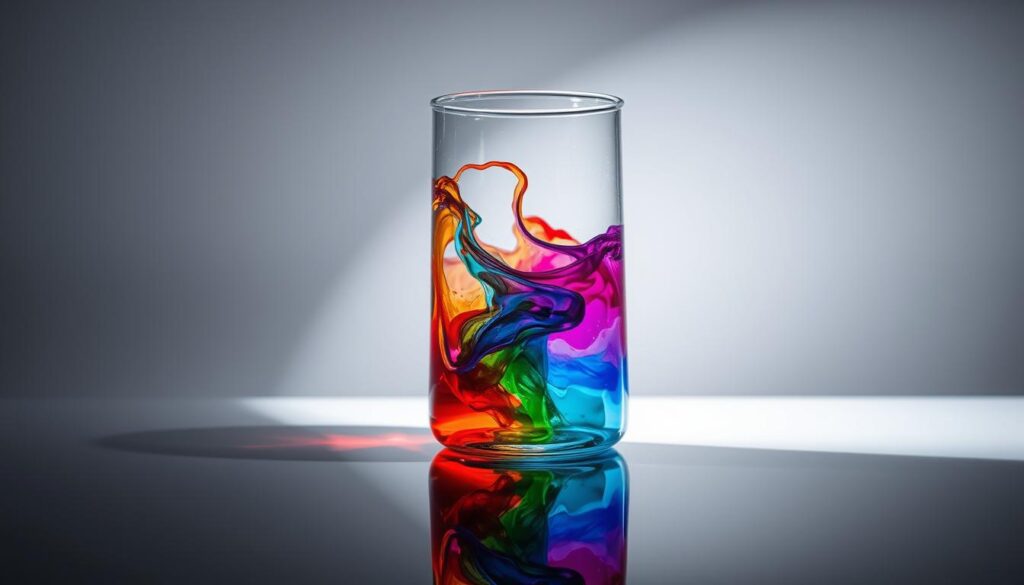
What if the art you proudly wear could silently affect your well-being? With over 33% of U.S. adults now sporting ink—and rates doubling since 2012—many wonder about the long-term effects of this cultural phenomenon. While most enjoy their body art without issues, growing research suggests we might need to look closer at what’s beneath the surface.
A 2023 Pew study reveals half of women aged 18-49 have at least one tattoo. This surge in popularity means millions are exposed to inks containing pigments never meant for human skin. Though infections and allergic reactions get attention, scientists now ask tougher questions about chronic exposure to these foreign substances.
Recent studies from Europe and America hint at possible links between body art and certain cancers. While no direct cause-effect relationship exists yet, researchers emphasize that ink particles can linger in lymph nodes for decades. Your skin isn’t just a canvas—it’s a living organ interacting with every drop of pigment.
Why does this matter now? Modern tattoo practices use more complex chemicals than ancient methods. Regulatory gaps in the U.S. mean ink ingredients vary widely. As you consider new artwork or care for existing pieces, understanding these nuances becomes vital for making informed choices about your health.
Key Takeaways
- Over 33% of American adults have tattoos, with popularity tripling since 2003
- Emerging studies explore potential connections between ink ingredients and lymphoma risks
- U.S. tattoo ink regulations lag behind European safety standards
- Pigment particles can migrate to lymph nodes and remain for years
- Allergic reactions and infections remain more common than cancer concerns
- Long-term health effects are still being researched due to tattoo popularity growth
Exploring Tattoo Ink and Its Chemical Risks

Modern body art involves more than artistic expression—it introduces foreign substances into your skin’s deepest layers. While vibrant designs grab attention, the ingredients in colored pigments often hide concerning truths about their composition.
What’s Really in Your Permanent Art?
Black tattoo ink frequently contains carbon black—a pigment carrying polycyclic aromatic hydrocarbons (PAHs). These compounds appear on California’s Prop 65 list of known carcinogens. Colored varieties often contain heavy metals like cadmium (reds) or cobalt (blues)—substances industrial workers handle with protective gear.
Your body doesn’t just store these chemicals in skin. Microscopic particles travel through your bloodstream, with studies showing:
- Pigment deposits in 90% of sampled lymph nodes near tattoos
- Identical metal concentrations in nodes and original ink
- No elimination pathway for these foreign particles
Your Body’s Hidden Storage System
When needle meets skin, your immune system springs into action. Macrophages—your cellular cleanup crew—attempt to digest ink particles. But these cells eventually die, releasing captured pigments back into tissue. This cycle repeats indefinitely, creating chronic inflammation hotspots.
“We’ve found nano-sized ink particles in liver and spleen tissue decades after initial exposure,” notes a 2022 Journal of Hazardous Materials study.
Laser removal amplifies concerns. Breaking down pigments can release toxic byproducts your body never encountered originally. Unlike European standards requiring ingredient disclosure, U.S. regulations allow undisclosed chemicals in tattoo inks—leaving users guessing about long-term health risks.
Do Tattoos Cause Cancer? What Research Reveals

Groundbreaking Scandinavian research is reshaping how we view body art’s long-term effects. Two major investigations from Denmark and Sweden offer fresh insights into how ink interacts with your biology over time.
Insights from Danish and Swedish Studies
A 2025 Danish study tracking twins found those with body art larger than their palm faced greater skin cancer risk. The research suggests bigger designs mean more pigment exposure—potentially overwhelming your body’s defenses.
Swedish scientists analyzed 5,591 participants in eClinicalMedicine. Their findings show:
- 21% higher risk of lymphoma for inked individuals
- 81% spike in risk during the first two years post-inking
- 19% elevated risk after 11+ years
“The timing patterns surprised us. Early and late risk peaks suggest different biological mechanisms at play,” noted lead researcher Dr. Elin Sandström.
This table breaks down key findings:
| Study | Participants | Key Finding | Risk Timeline |
|---|---|---|---|
| Danish Twin | 4,200 pairs | Large tattoos → +37% skin cancer | Lifetime exposure |
| Swedish National | 1,398 cases | Tattoos → +21% lymphoma | Peaks at 2 & 11 years |
While absolute risks remain low—only 0.026% of Americans develop lymphoma yearly—the consistent association across studies warrants attention. Researchers accounted for smoking, income, and other factors, strengthening the link to ink itself.
These findings don’t mean you should panic. But they do highlight why scientists urge caution with large designs and frequent touch-ups. Your body might react differently to pigments than your friend’s—genetics play a role we’re just beginning to understand.
Lifestyle Factors and Other Skin Cancer Risk Considerations

Your skin’s story isn’t just ink-deep—daily choices write crucial chapters in cancer risks. While vibrant body art draws attention, routine behaviors like beach days and cigarette breaks carry clearer connections to health outcomes.
Sunburns vs. Sleeves
UV radiation remains public enemy #1 for skin health. Just one blistering sunburn doubles melanoma risk, while indoor tanning boosts it by 75%. Compare that to body art—where research shows cancer links remain uncertain but secondary to these established threats.
Smokers face similar stakes. Tobacco smoke contains 70+ carcinogens that travel through blood to skin cells. This creates a double-whammy when combined with ink particles in lymph nodes—your body juggles multiple irritants simultaneously.
Spotting Trouble Through Ink
Dark pigments can mask mole changes that signal melanoma. A 2024 Johns Hopkins study found:
- 38% longer detection time for skin changes under tattoos
- 26% higher biopsy rates for ambiguous lesions near ink
Blackout designs pose special challenges. These solid fields of pigment often cover entire limbs, creating visual static where early warning signs might hide. Regular self-checks become treasure hunts—you’ll need to memorize every freckle and bump beneath the artwork.
“Patients with full-coverage tattoos should schedule professional skin exams twice yearly,” advises Dr. Alicia Patel of the American Academy of Dermatology.
Needle hygiene matters too. While modern studios use single-use equipment, underground artists might reuse tools. Hepatitis C infections from contaminated needles increase lymphoma risks—a hidden danger beyond the initial tattoo experience.
Conclusion
Your body art choices deserve informed consideration as research evolves. Emerging studies suggest possible connections between ink pigments and certain types of cancers, particularly lymphoma and skin cancer. However, the absolute risk remains small—most people with permanent designs don’t develop these conditions.
Regular monitoring becomes crucial if you have body art. Perform monthly skin checks using the ABCDE method: look for asymmetry, irregular borders, color variations, diameter over 6mm, and evolving spots. Dark pigments can mask changes, so inspect areas under your artwork carefully.
Keep an open dialogue with healthcare providers about unusual symptoms. While choosing experienced artists and avoiding large designs over moles helps reduce health risks, staying proactive matters most. Lymph nodes storing ink particles for decades make ongoing vigilance valuable.
Remember—knowledge empowers better decisions. Millions enjoy body art safely, but understanding potential risk factors lets you balance self-expression with well-being. Stay curious about new findings, and let your health guide your creative choices.
